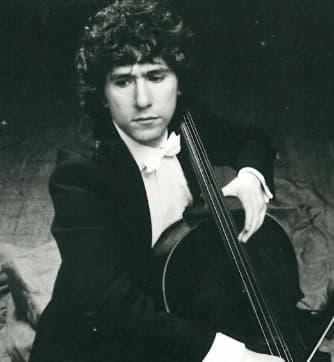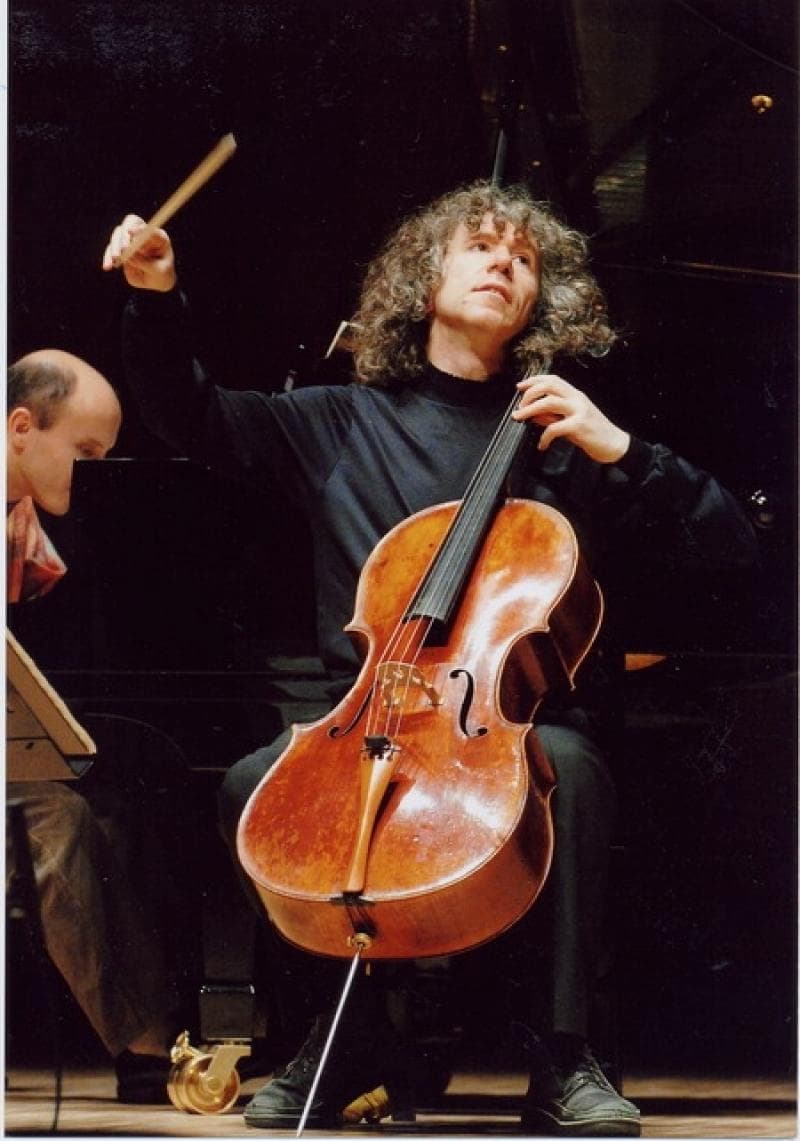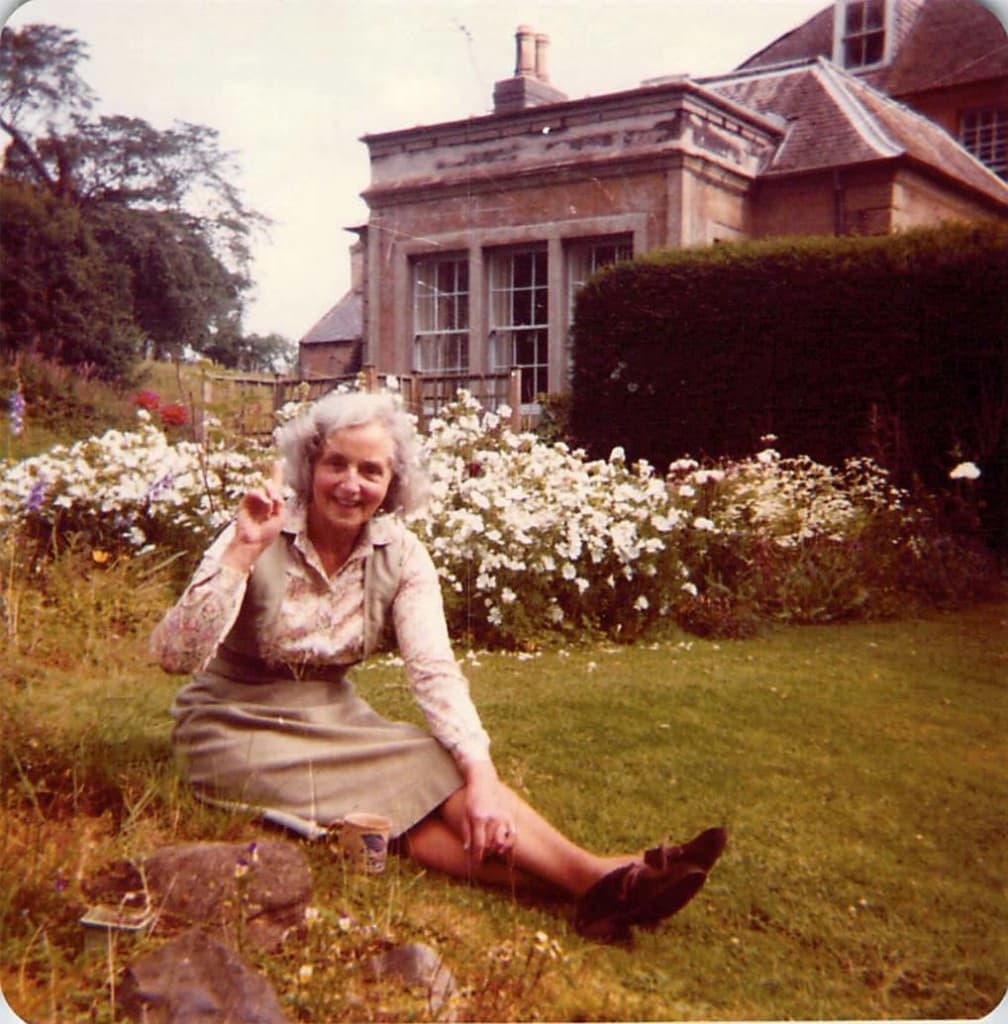British cellist Steven Isserlis, born 19 December 1958 made his breakthrough in 1988 when he asked John Tavener to write a dedicated work for cello and orchestra. Isserlis premiered The Protecting Veil at the BBC Proms and quickly followed up with a recording that was received with great acclaim by critics and audiences alike.

The young Steven Isserlis
John Tavener: The Protecting Veil (Steven Isserlis, cello; London Symphony Orchestra; Gennady Rozhdestvensky, cond.)
In the Beginning
Isserlis was born into a highly musical family in south-west London. His father played the violin, and his mother played the piano. His elder sister became a professional violist, and the middle sister played the violin. “All that was needed was a cello.” A local teacher offered to give young Steven lessons for three months, but initially, he did not take to the instrument. However, as he explained, “then I started again, and this time I was hooked.”

Steven Isserlis
The Isserlis family tree strongly resembles Steven’s distinctive mop of curls. It can be traced back to Rabbi Moses Isserlis, Felix Mendelssohn, Karl Marx, and Helena Rubinstein. His grandfather, Julius, was a celebrated pianist, composer, and teacher who had permission from Lenin to tour the West. He was part of a group of musicians “spreading the word about what a wonderful place the Soviet Union was, but none of them ever went back.”
Steven Isserlis Performs Bach’s Cello Suite No. 3, “Bourrée I & II”
In Beethoven’s Footsteps
Isserlis tells the story of how his grandfather and his father, as a small boy, sought housing in Vienna in 1923. “He was shown around a flat by a 102-year-old landlady, who was very friendly and ruffled my father’s hair. But when my grandfather explained that he was a musician, she said: ‘Oh no, I hate musicians’. Why? ‘Because when I was a girl, my aunt had a musician lodger, a filthy old man who used to spit on the floor, and I hated him. His name was Beethoven‘.”
Steven Isserlis always knew that he either wanted to be a musician or a writer. Naturally drawn to the performing stage, Isserlis did give a number of concerts as a teenager, but as he explained, “I was never really a prodigy, and I have never won any of the big competitions. In fact, my career did not take off until my 30s.” Finding his own voice and growing as a musician was a gradual process.
Steven Isserlis Performs Clara Schumann’s Three Romances, Op. 22 No. 3
Studying Under Jane Cowan

Jane Cowan
Isserlis was educated at the City of London School but left at the age of 14 to move to Scotland to study with Jane Cowan. Isserlis considers her his most important formative influence, remembering an “extraordinary, difficult, charming, impossible, lovable character who was touched with genius.” Cowan, according to Isserlis, “had the most extraordinarily powerful effect on those around her. There were those who fell totally under her spell and those who instinctively reacted against her; nobody remained unaffected by her unique charisma.”
Cowan was an extraordinary teacher with an extraordinary gift for inspiring her students. She brought to life whatever music was studied through vivid stories, capturing the essence of the composer’s life and personality. Above all, “her passion was contagious, and music making became a joy, an adventure, and a revelation… Her main musical concern was with the art of phrasing; agogic accents—the stretching of time within a strict tempo-were sacred to her.”
Steven Isserlis Performs Beethoven’s Sonata No. 4 for cello and piano, Op. 102, No. 1
The Isserlis Voice

Steven Isserlis: Why Beethoven Threw the Stew
Between 1976 and 1978, Isserlis studied at the Oberlin Conservatory of Music with Richard Kapuscinski, honing his talent and developing his distinctive style. The process of finding his own voice was “a long journey.” His playing has certainly evolved, and in an interview with Tim Janof, he explains, “I find I’m playing with more obvious emotion than I was before. I don’t know why that is. Perhaps I’m getting older and sadder, but not much wiser.”
For Isserlis, versatility is the key. “No matter what piece we are playing, we must be ourselves! But we have to find our true selves through the scores we play. The more different worlds we can enter, the more exciting and fresh music will remain for us and the audience.” Isserlis’ versatility also surfaces as the author of two books for children on the lives of famous composers. He certainly is trying hard to guide young musicians to think about music, and not “just focusing on publicity and a successful career.”
For more of the best in classical music, sign up for our E-Newsletter
